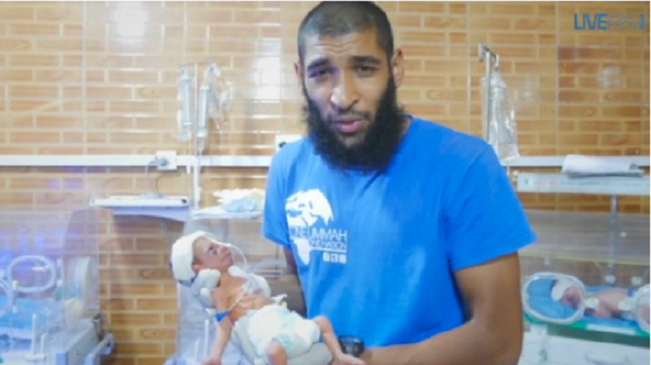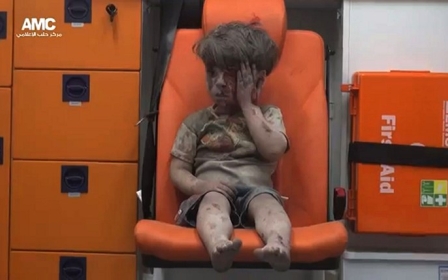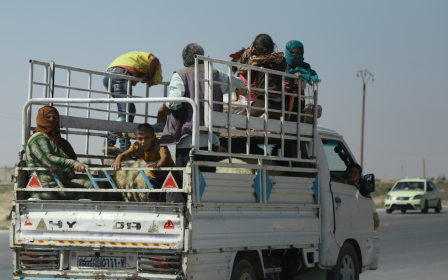The thousands of Omran Daqneeshes I have seen

There are many Omran Daqneeshes. In fact, many children in worse condition than Omran. Some killed, some blown to pieces, children whose names are unknown and families who have lost all their children in a single explosion.
One image will stay with me forever: I remember a father losing five of his daughters in a blast. He was screaming and scrambling to pull one of his daughters from the rubble and we were trying to help him.
When we pulled her out, it was very similar to Omran. We managed to get her from the rubble and her father took her from our hands and held her against his shoulder.
She was covered in dust, but when he lifted her up, blood began pouring down her face and onto his shoulders as he was walking away. I will always remember that image. It lingers in my mind.
There are thousands – hundreds of thousands – of children in Syria who are wounded or killed on a daily basis. Women and children are the ones mostly enduring the wrath of the Russian, Iranian and Syrian regimes.
Last week, I recorded one of the most painful sights I have had to witnesses in my life. Six children – all cousins – were playing in the street in Aleppo when they were hit by a cluster bomb. I’ve seen a lot of children die, but never like this.
I was at the hospital when the children arrived – it’s one of the only hospitals in the area that can deal with internal medicine. We had a guy suffering from a heart attack, a guy having an epileptic seizure and another who who had just been electrocuted.
When the children arrived they were high priority, so we literally had to wheel the other people into the hall. It was chaos. Everyone, doormen and cleaners, was holding children, trying to stop the blood from their wounds. I’ve never seen anything like the harrowing chaos that unfolded before my eyes.
Syria’s children have been damaged by the war – most suffer from post-traumatic stress disorder. Every child here has family members who are amputees or have been killed or have suffered profoundly in the war, so it’s difficult for them and we want to change that.
That is why we have many youth projects on the ground where we take children to play football, where we do karate and other activities. We want them to feel like children again and don’t want them to think about war.
Many children need counselling, but they don’t have access to it. After five years of war, many are not in school, a direct impact of the war. Five years on, there are children who cannot read and write and that’s very sad.
I am a bit frustrated, but I am also glad that Omran’s image has finally touched the heart of the world.
The question is, what is to be done about it? Is he going to be another Alan Kurdi, washed up on a beach so people could see his heartbreaking image for a while, feel some empathy, then forget about the terrible situation in Syria?
Action must be taken. The impact on children is serious and deep, and we have to think about the future we are leaving for them, the future we are handing to these children.
- Tauqir Sharif has been based in Syria since 2012 and runs the Syria-based aid organisation Live Updates from Syria.
The views expressed in this article belong to the author and do not necessarily reflect the editorial policy of Middle East Eye.
Photo: A photo of Tauqir Sharif in Aleppo in August 2016 (Facebook/Tauqir Shafir)
Middle East Eye propose une couverture et une analyse indépendantes et incomparables du Moyen-Orient, de l’Afrique du Nord et d’autres régions du monde. Pour en savoir plus sur la reprise de ce contenu et les frais qui s’appliquent, veuillez remplir ce formulaire [en anglais]. Pour en savoir plus sur MEE, cliquez ici [en anglais].






